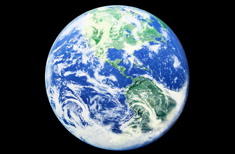 The Living Planet Index is based on trends in nearly 5,000 populations of 1,686 species of mammal, bird, reptile, amphibian and fish from around the globe.
The Living Planet Index is based on trends in nearly 5,000 populations of 1,686 species of mammal, bird, reptile, amphibian and fish from around the globe.
The global index (Living Planet Index) shows that vertebrate species populations declined by nearly 30% during the period 1970 to 2005.
Humanity’s Ecological Footprint- Human demand on the biosphere more than doubled during the period 1961 to 2005.
Global Living Planet Index shows an average trend of -28% from 1970 to 2005 in 4,642 populations of 1,686 species.
Temperate Living Planet Index shows a +6% average trend between 1970 and 2005 in 3,309 opulations of 1,235 species.
Tropical Living Planet Index shows a -51% overall trend from 1970 to 2005 in 1,333 populations of 585 species.
Terrestrial Living Planet Index shows an average -33% trend between 1970 and 2005 in 2,007 populations of 887 terrestrial species.
Marine Living Planet Index shows an average -14 % trend over 35 years in 1,175 populations of 341 marine species.
Freshwater Living Planet Index shows an average -35% trend from 1970 to 2005 in 1,463 populations of 458 species.
Tropical Forest Living Planet shows an average -62% trend between 1970 and 2005 in 503 populations of 186 species.
Dryland Living Planet Index shows an average -44% trend between 1970 and 2005 in 476 populations of 149 species.
Grassland Living Planet Index shows an average -36% trend between 1970 and 2005 in 703 populations of 309 species.
Nearctic Living Planet Index shows no overall change in 1,117 populations of 588 Nearctic species.
Neotropical Living Planet Index shows an average -76% trend over 34 years in 202 populations of 144 Neotropical species.
Palearctic Living Planet Index shows an overall +30% trend over 35 years in 1,167 populations of 363 Palearctic species.
Afrotropical Living Planet Index shows an average -19% trend over 35 years in 552 populations of 201 Afrotropical species.
Indo-Pacific Living Planet Index includes the Indomalayan, Australasian and Oceanic realms, and shows an average -35% trend over 35 years in 441 populations of 155 species.
Bird Living Planet Index shows an average -20% trend between 1970 and 2005 in 2,185 populations of 895 species.
Mammal Living Planet Index shows an average -19% trend from 1970 to 2005 in 1,161 populations of 355 species.
Data: The Living Planet Report 2008, Published in October 2008 by WWF–World Wide Fund For Nature (formerly World Wildlife Fund), Gland, Switzerland.

